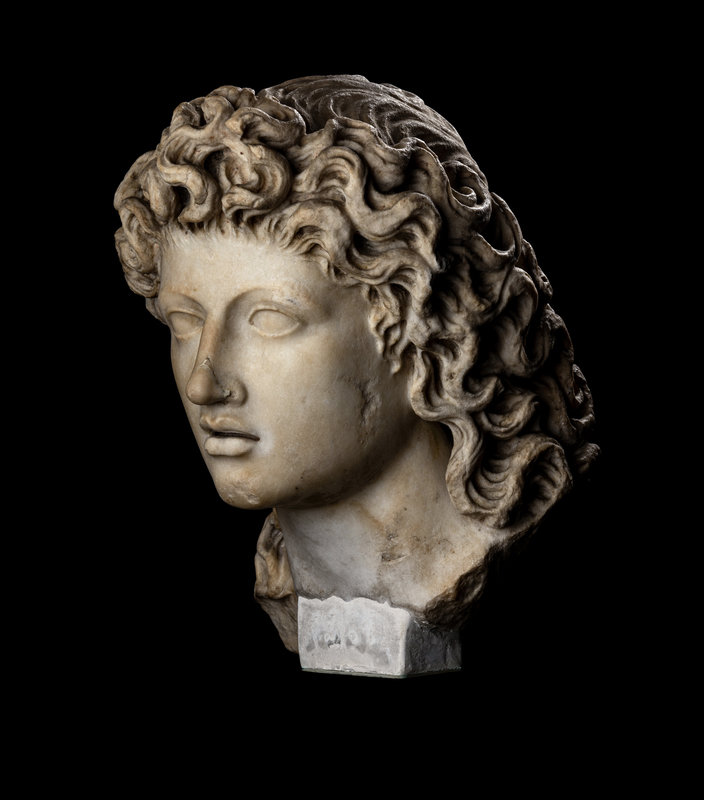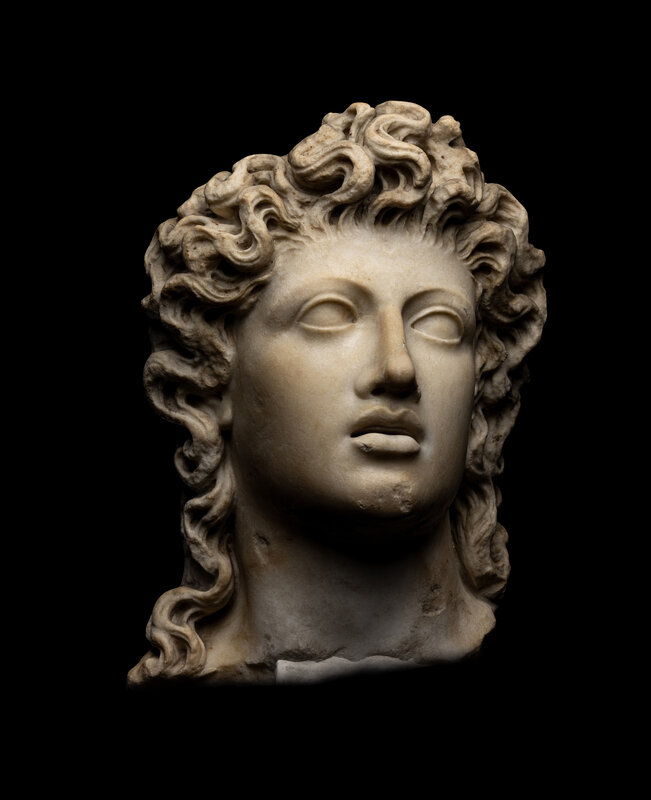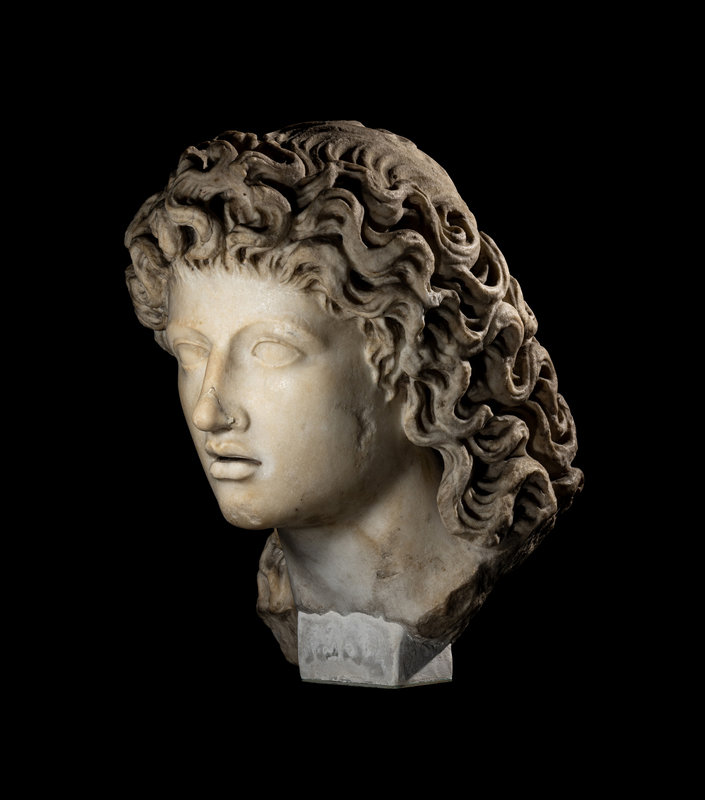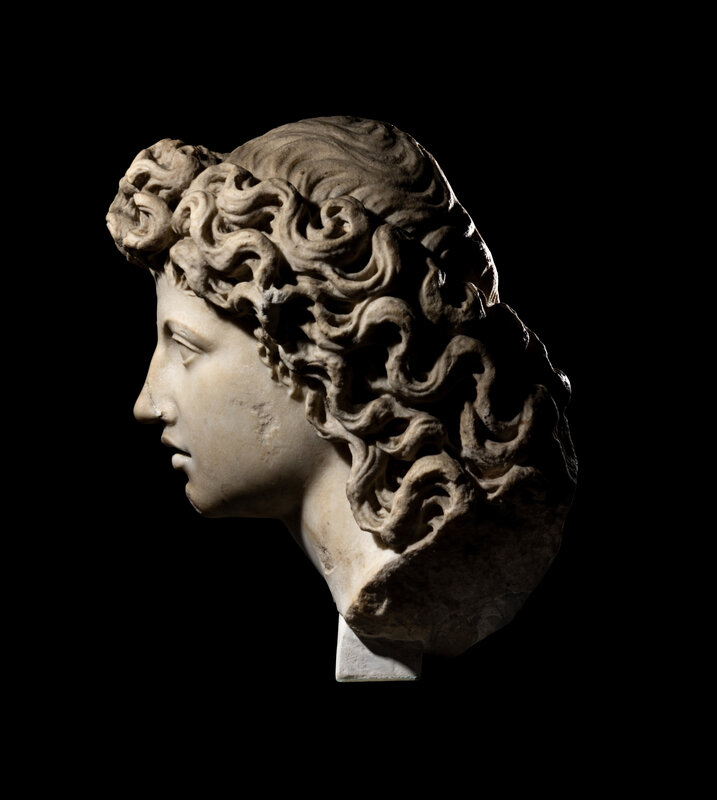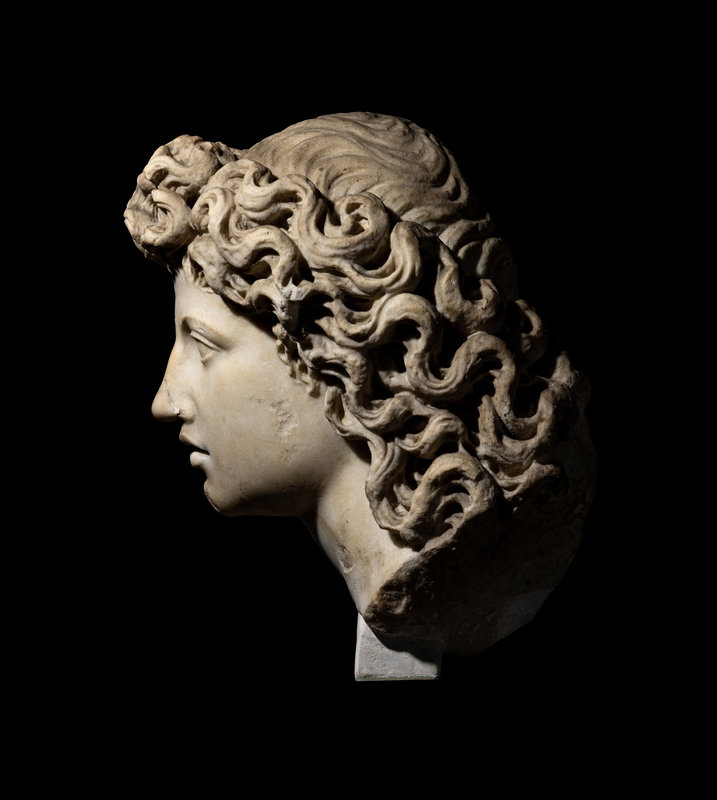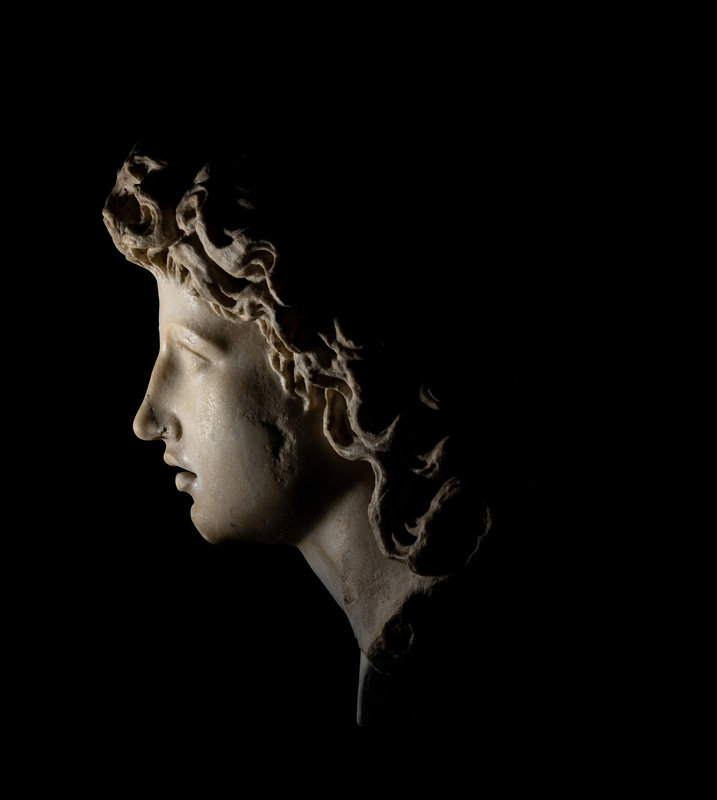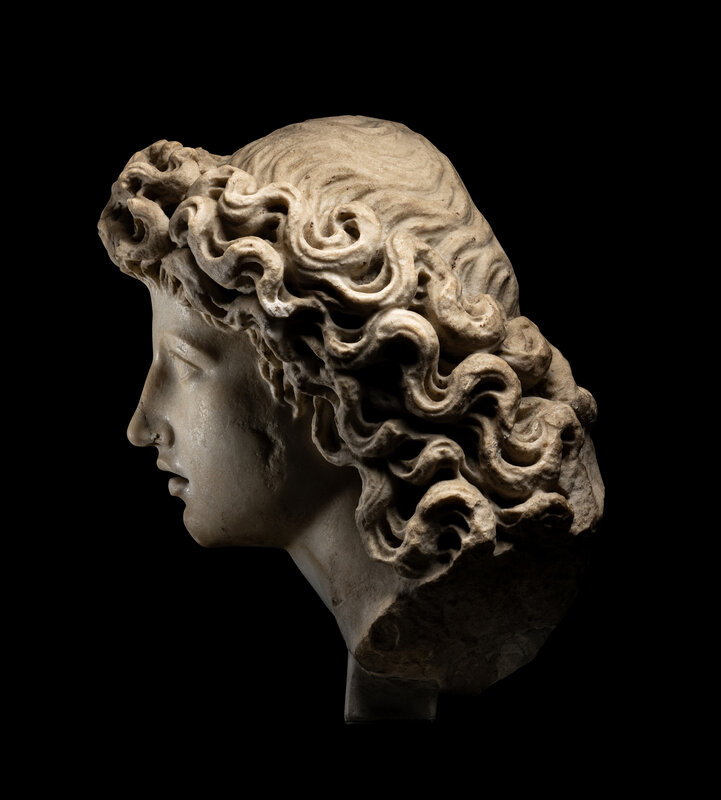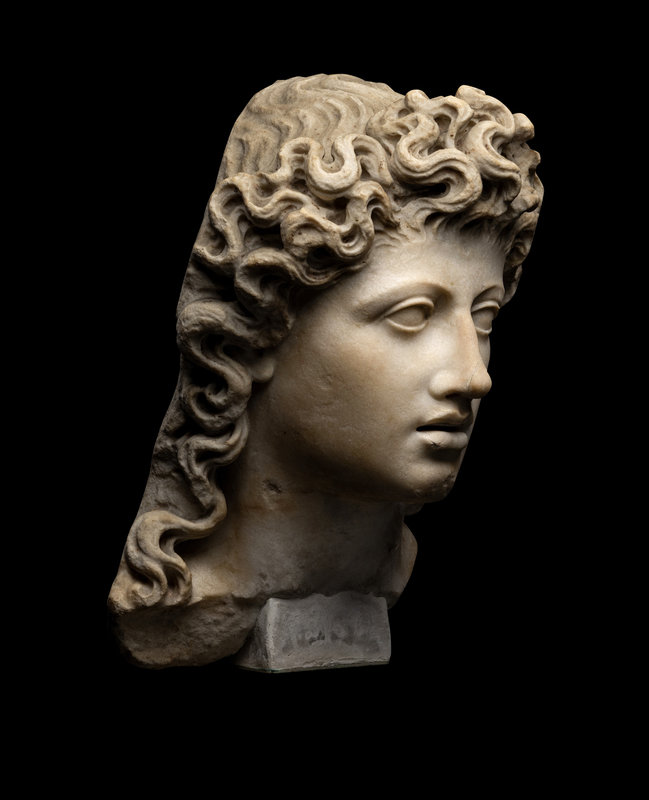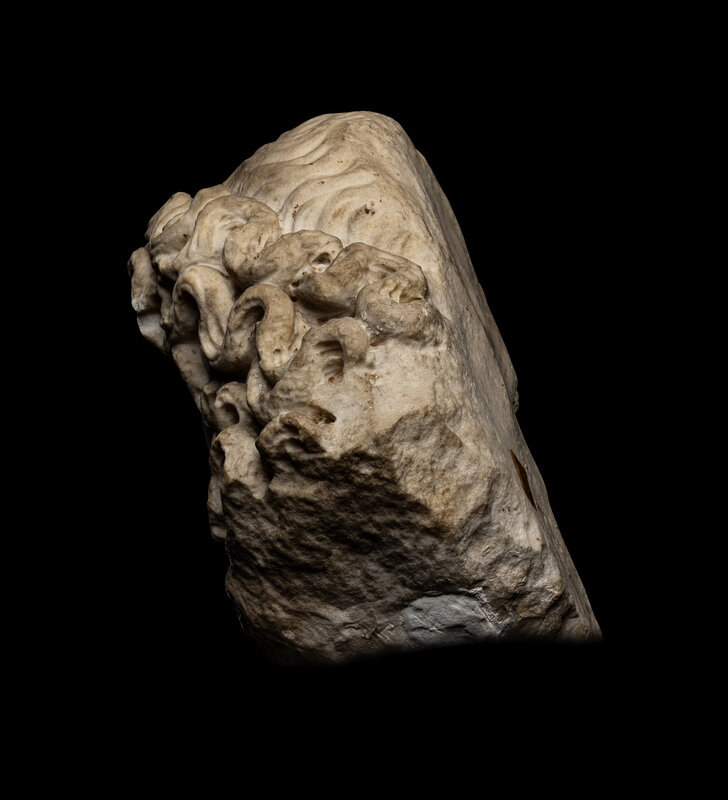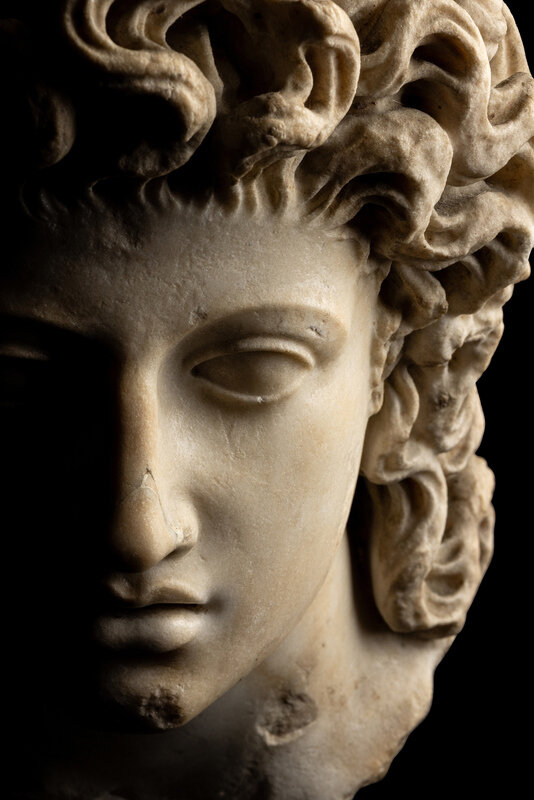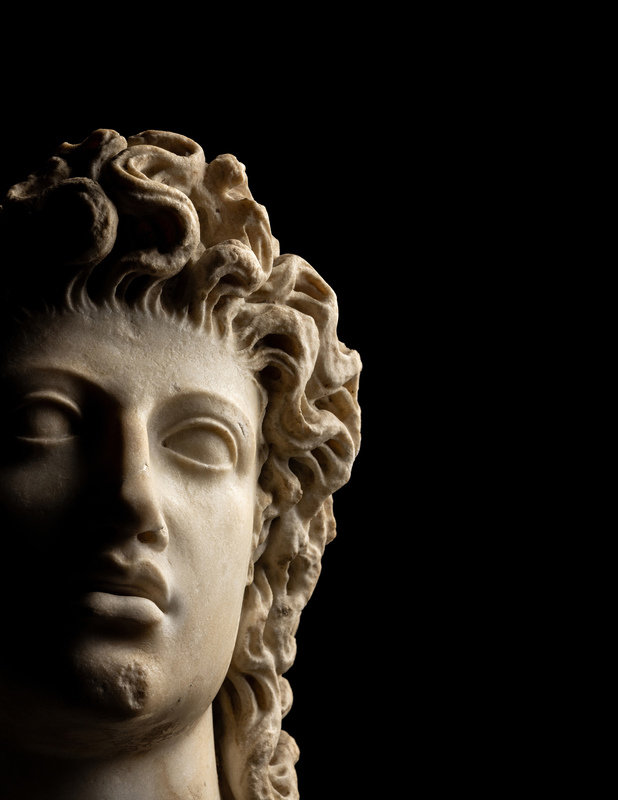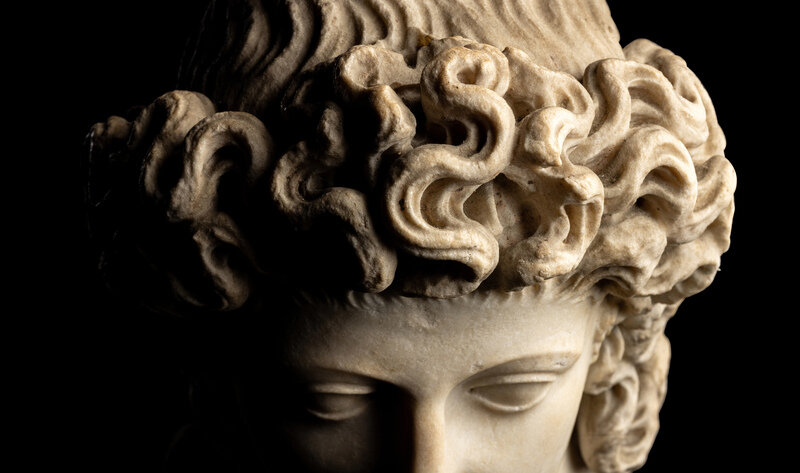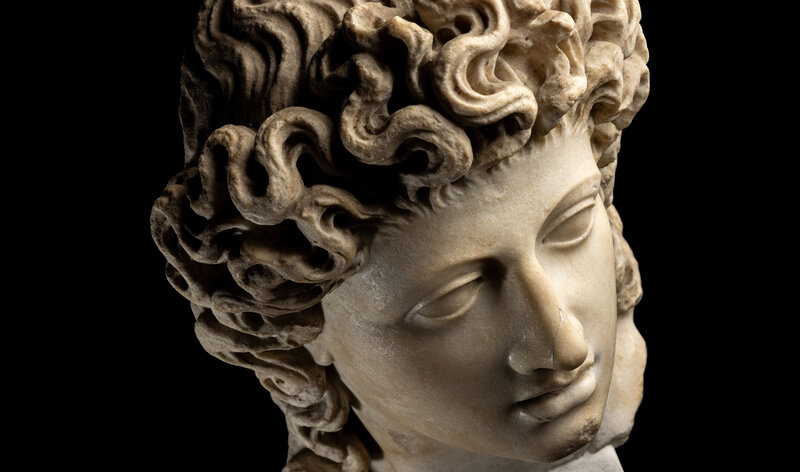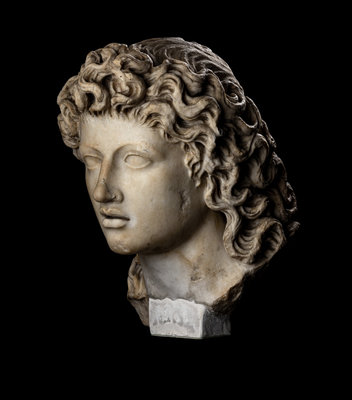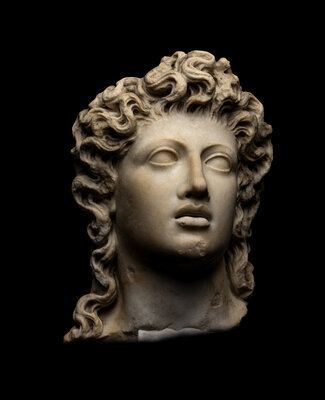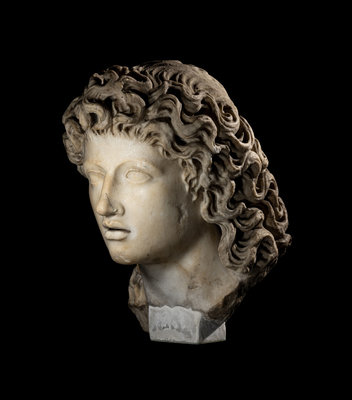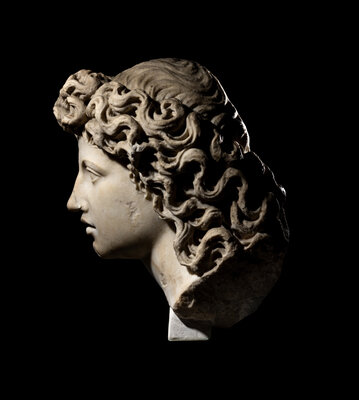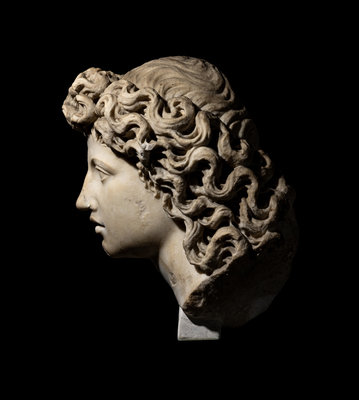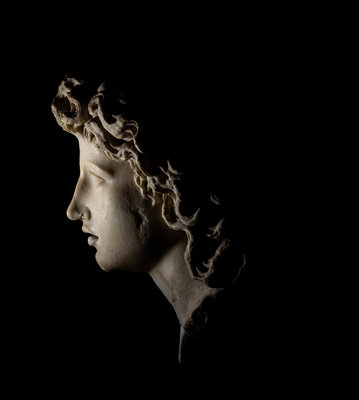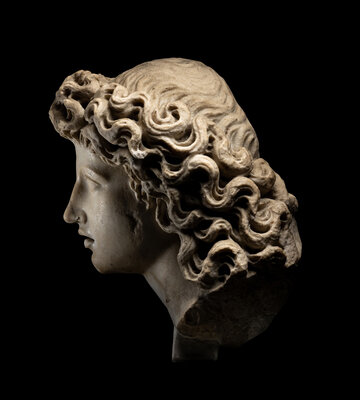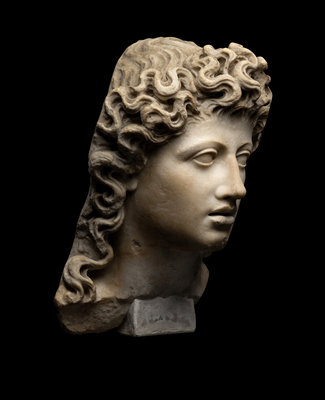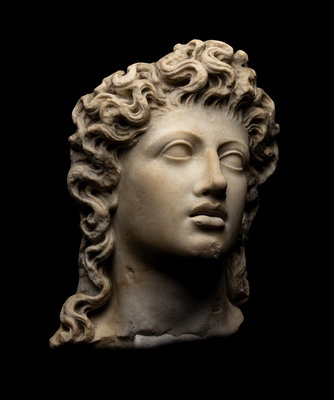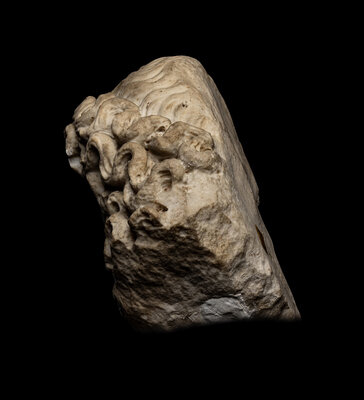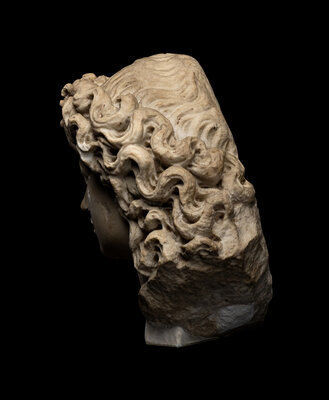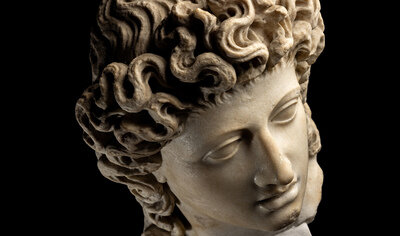Condition Report
Contact Information
Auction Specialist
Lot 19
Lot Description
Provenance:
Ernest Brummer (1891-1964), Paris & New York.
Ella Bache Brummer, New York, 1964-1999; thence by descent to her nephew, Dr. John Laszlo, Atlanta, Georgia.
Published:
For The Brummer Gallery Records at The Metropolitan Museum Cloisters Library and Archive, see Photos of Brummer Objects [...], c. 1960s: Photograph nos. 05 & 20
[https://libmma.contentdm.oclc.org/digital/collection/p16028coll9/id/65463/rec/5]
This youthful, powerful head tilts strongly forward, with voluminous and tousled, finger-waved hair sprouting from low on the brow and cascading in thick waves around it. Full and parted lips show the line of upper teeth, in the manner used for heroes and mythological creatures since the dramatic sculpting of the Pergamon Altar and beyond. This aspect, as well as the unusually low brow, suggests that the subject is mythological rather than human. The hair, with deeply drilled sections, suggests late Antonine workmanship, as do the smooth and polished planes of the countenance. The closest comparisons to this head in physiognomic bearing, dating, and technique are the robust pair of tritons at the Musei Capitolini (Acc. nos. MC1119 and MC1121) that originally flanked the famed Commodus portrait from the Horti Lamiani. That pair tilted towards the emperor, with their powerful torsos patched suggestively with scaly aquatic life.
Tritons refer to the mythological marine hybrid creatures, combining the torsos of men with elaborate fishtails (sometimes with the addition of horse forelegs) and generally with scales or aquatic flora obscuring the junction at the waist. These fellows were occasionally amphibious, emerging from the sea to partake in battles or blow shell-trumpets, and in these instances their tails could become split and serpentine, enabling nimble movement on shore (such as the one in Copenhagen, Ny Carlsberg Glyptotek, Acc. no. I.N.522). Although sculptural examples are known from the late Classical period, the popularity of tritons flourished in the late Hellenistic period and well into Imperial Rome.
Their dramatic inclusion in sculptural groups was eminently flexible. Tritons could commemorate naval dominion (as the Capitoline pair likely did) or provide decorative rides for nereids during marine-thiasoi (joyful aquatic triumphal processions) such as the famed relief from the so-called ‘Altar of Domitius Ahenobarbus’ in the Munich Glyptothek (Acc. no. 239), or an ambiguous mixture of both. The present head was surely part of a lost group, monumental in scale, in which he surged forward (as if on a cresting wave), his gaze fixed on a distant objective.
